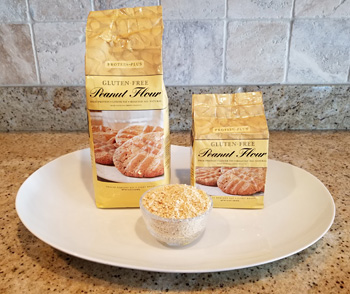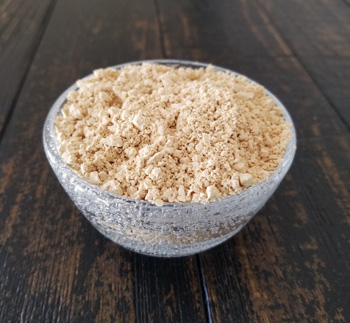Credit: USDA
By Rosalie Marion Bliss
January 25, 2007
New Agricultural Research Service (ARS) findings about the thickening capacity of various forms of peanut flour will help scientists improve food textures.
Peanut flour is a dry powder formed after the partial extraction of oil from the roasted peanut seed. It is used to add flavor and protein to processed baked goods, nutrition bars and snacks, as well as to marinades, sauces and dressings. Worldwide, peanut flours have been limited to use by industrial food processors as a major food ingredient.
The study was conducted by food technologist Jack P. Davis and colleagues in the ARS Market Quality and Handling Research Unit, Raleigh, N.C. ARS is the U.S. Department of Agriculture's chief scientific research agency.
To gauge how effectively different commercial peanut flours thicken during heat processing, Davis used different types of rheological tests. Rheological measurements involve testing the flow behavior and form changes of a material and have been shown to relate to the human perception of texture.
Generally, peanut flours are offered at fat levels of 12 or 28 percent, and either as light, medium or dark roasts. Davis found that regardless of roast color, lower-fat peanut flours thicken more effectively than higher-fat ones.
While peanuts are about 25 percent protein, peanut flour is about 50 percent protein. That's because the process of mechanically removing fatty oil from roasted peanuts enriches the levels of the remaining peanut components. The resulting flour is naturally low in fat, high in protein and relatively low in carbohydrates.
Ounce-per-ounce, low-fat, light-roasted peanut flours were found to promote more viscosity—or to thicken more effectively—than other peanut flours when dispersed in water and heated under controlled conditions.
Davis and ARS research leader Timothy Sanders will report the findings in an upcoming issue of The Journal of Texture Studies. That data and those from future studies will help food processors choose the best heat treatments, based on a particular peanut flour's thickening properties.








